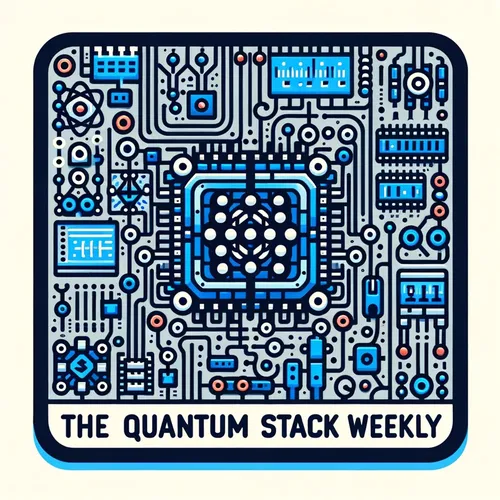Quantum Gaussian Processes: Los Alamos Rewrites Machine Learning for Scalable Quantum AI
- Author
- Quiet. Please
- Published
- Wed 30 Jul 2025
- Episode Link
- https://www.spreaker.com/episode/quantum-gaussian-processes-los-alamos-rewrites-machine-learning-for-scalable-quantum-ai--67189930
This is your The Quantum Stack Weekly podcast.
This week’s headline feels almost cinematic: Los Alamos cracks open a new era in quantum machine learning, using true quantum Gaussian processes to blaze past old barriers. Imagine, just days ago—July 28th—a team at Los Alamos National Lab published results that sidestep the neural-network traps that have plagued hybrid quantum-classical AI. Instead, they reached for a tool from classical statistics, Gaussian processes, and made it natively quantum. My name’s Leo, your Learning Enhanced Operator, and today’s episode is all about this development and how it shifts the quantum stack for everyone listening.
Picture morning sunlight filtering into a lab at Los Alamos—cables coiled like snakes, dilution fridges humming, scientists catching their reflections in the chrome of cryostats. Here, quantum phenomena aren’t merely abstract. They shimmer in every measurement, every improbable result. In this setting, the Los Alamos breakthrough appears both radical and inevitable. The team, led by quantum theorists and AI specialists, asked: what if we stopped forcing quantum processors to mimic classical learning? Instead, what if we built machine learning that thrives on quantum rules—entanglement, superposition, the whole stubborn, beautiful toolkit?
That’s the heart of Gaussian processes—a mathematical framework for making predictions in the fog of uncertainty. Move it to the quantum domain, and you get algorithms that can update their beliefs about the world as fresh quantum data streams in—like photons cascading through a crystal or ions trapped and dancing in sync. In classical AI, we lean on Bayesian inference for everything from medical diagnoses to financial forecasting. With this breakthrough, quantum systems can now update equally fast, and—crucially—sidestep the daunting scaling issues that limited previous approaches.
If you want numbers: instead of wrestling with billions of neural network parameters, the Los Alamos solution works with probability curves—the kinds of patterns quantum particles love to draw. The result? More scalable models, with distinctly quantum advantages; systems that could one day predict complex chemical reactions or optimize traffic in real-time, tasks where today’s supercomputers only grope in the dark.
This breakthrough comes hot on the heels of tangible real-world progress across the global quantum scene. Just last week, Infleqtion announced the buildout of a neutral atom quantum computer in Illinois, targeting utility-scale performance. The aim? To support machine learning workloads just like those foreseen by the Los Alamos team—applications in materials science, AI, national security, even drug discovery. When I see these developments, I can’t help but draw a quantum parallel: each isolated research group, like a qubit, is powerful—but when entangled through collaboration, their potential multiplies.
As quantum computing matures, moments like this point to a future where machine intelligence isn’t just faster—it’s fundamentally smarter, learning as only the quantum world allows. That’s a pretty dramatic leap, not just for AI, but for how we imagine knowing itself.
Thanks for joining me, Leo, on The Quantum Stack Weekly. If you have questions or topics you want explored, email me at [email protected]. And don’t forget to subscribe to The Quantum Stack Weekly. This has been a Quiet Please Production; for more information, visit quietplease.ai.
For more http://www.quietplease.ai
Get the best deals https://amzn.to/3ODvOta
